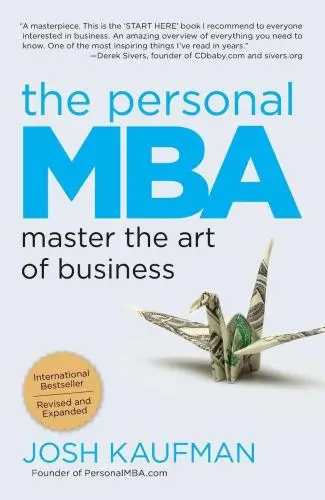
The Personal MBA
Master the Art of Business
What's it about?
The Personal MBA is a comprehensive guide that distills the key principles of a traditional MBA program into practical, easy-to-understand concepts. Kaufman covers essential business topics such as marketing, finance, and decision-making, making it perfect for anyone looking to improve their business acumen. With a focus on real-world applications and hands-on learning, this book is a valuable resource for both aspiring entrepreneurs and seasoned professionals seeking to enhance their business skills.
About the Author
Josh Kaufman is a bestselling author known for his practical and insightful books on personal development and productivity. His most popular book, "The Personal MBA," offers a fresh and unconventional approach to business education. Kaufman's writing style is clear, engaging, and packed with actionable advice. He brings a unique perspective to common topics, making complex ideas easy to understand and apply in everyday life. If you're looking to boost your skills and reach your goals, Kaufman's books are a must-read.
10 Key Ideas of The Personal MBA
Embrace the 10-Day MBA Reading Plan for a Comprehensive Business Education
Dedicate yourself to reading and understanding core business concepts over a short period.
This intensive approach allows you to immerse yourself in the fundamentals of business, finance, marketing, and strategy, ensuring a solid foundation.
By focusing intensely over ten days, you can cover a wide breadth of material, making connections between concepts more easily and applying them to real-world scenarios more quickly.
Learn DeeperCreate a Reading Schedule: Break down your 10-day plan into daily reading goals. For example, if you're covering 10 core business concepts, focus on one concept per day. Allocate specific times for reading and stick to them as much as possible.
Choose Diverse Materials: Select books, articles, and case studies that cover the range of topics you're interested in. This could include foundational texts in marketing, finance, strategy, and operations management. Variety will keep you engaged and provide multiple perspectives.
Apply What You Learn: After each reading session, jot down how the day's concept could be applied to a real-world business scenario or even your personal projects. This helps solidify your understanding and makes the knowledge more practical.
Discuss and Reflect: If possible, find a study buddy or a mentor with whom you can discuss what you've learned. Talking about the concepts helps deepen your understanding and may provide new insights.
Review and Revise: At the end of your 10-day plan, review all the concepts you've covered. Make notes on areas that were challenging and might require further study. Consider how you can integrate these insights into your daily work or future business plans.
- Example
If you're focusing on marketing on Day 3, you might read 'Influence: The Psychology of Persuasion' by Robert Cialdini to understand how to better craft your messaging and engage customers.
- Example
On Day 7, while exploring financial fundamentals, you could analyze a real company's annual report, breaking down its income statement, balance sheet, and cash flow statement to understand how the business operates financially.
Implement the Five-Part Business Idea Validation Process
Before diving into any new venture, rigorously test your business idea through a structured validation process.
This involves identifying your target market, analyzing potential competitors, assessing the financial viability, soliciting feedback from potential customers, and finally, creating a minimum viable product (MVP).
This systematic approach minimizes risk and ensures that there is a demand for your product or service before significant resources are invested.
Learn DeeperIdentify Your Target Market: Start by defining who your product or service is for. Consider factors like age, location, interests, and problems they face. Use online surveys or social media polls to gather information.
Analyze Potential Competitors: Look into businesses offering similar products or services. Note what they do well and where they fall short. This can help you find a niche or an aspect of your business that can stand out.
Assess Financial Viability: Calculate the costs involved in starting and running your business. Compare these against the potential revenue you could earn. Tools like Excel or Google Sheets can be helpful for this.
Solicit Feedback from Potential Customers: Share your business idea with a small group from your target market. Ask for honest feedback on the concept, pricing, and any features they'd like to see. Online forums related to your industry can be a good place to start.
Create a Minimum Viable Product (MVP): Develop a simplified version of your product or service with just enough features to satisfy early customers and provide feedback for future development. This could be a basic app, a sample of your product, or a demo of your service.
- Example
If you're planning to launch an eco-friendly clothing line, your MVP might be a small collection of items made from sustainable materials. You could then showcase these at local markets or through social media to gauge interest and collect feedback.
- Example
For a mobile app idea, create a prototype using tools like Adobe XD or Sketch. Share this with potential users in your target market to understand if the app solves their problem effectively and what improvements are needed before full-scale development.
Adopt the Value-Based Selling Framework to Maximize Revenue
Shift your sales approach to focus on the value your product or service brings to customers rather than its features or price.
By understanding and articulating how your offering solves a problem or improves the customer's situation, you can justify a higher price point and increase customer satisfaction.
This method requires deep knowledge of your customers' needs and challenges, as well as clear communication of the benefits they will receive.
Learn DeeperIdentify Your Customer's Pain Points: Start by having conversations with your customers to understand their challenges and what they value most. Use surveys, interviews, or feedback forms to gather this information.
Articulate the Value Clearly: Once you know what matters to your customers, tailor your communication to highlight how your product or service directly addresses their needs. Focus on the benefits and outcomes rather than just the features.
Educate Rather Than Sell: Adopt an educational approach in your marketing and sales efforts. Provide valuable information that helps your customers understand why your solution is the best fit for their problem.
Offer Proof: Use testimonials, case studies, or data to back up your claims about the value your product or service provides. This builds credibility and trust with potential customers.
Follow Up and Adjust: After a sale, follow up with your customers to ensure they are experiencing the value you promised. Use their feedback to refine your value proposition and improve your product or service.
- Example
A software company learns that their clients are spending too much time on manual data entry. They focus their sales pitch on how their product can automate these tasks, saving time and reducing errors, rather than just listing its features.
- Example
A fitness coach discovers that her clients are not just looking to lose weight, but to feel more confident and energetic. She tailors her programs and marketing to emphasize these benefits, showing testimonials from past clients who've achieved these goals.
Utilize the 12 Standard Forms of Value to Innovate and Differentiate
Explore the twelve different ways businesses can deliver value to their customers, such as through products, services, shared resources, subscriptions, and leases.
By understanding and potentially combining these various forms, you can create unique offerings that stand out in the marketplace.
This framework encourages innovation and helps identify new opportunities for growth and differentiation.
Learn DeeperIdentify Your Current Value Form: Start by understanding which of the 12 standard forms of value your business or idea currently fits into. Is it a product, a service, or perhaps a subscription model? This clarity is the first step towards innovation.
Brainstorm Combinations: Once you've identified your current form of value, brainstorm ways to combine it with other forms. For example, if you offer a product, could you add a service component to enhance its value? Or perhaps introduce a subscription model for regular updates or maintenance?
Analyze Your Market: Look at your competitors and the broader market to see how they deliver value. Are there gaps in the market that you could fill by adopting a different form of value or combining several forms in a unique way?
Test and Get Feedback: Before fully rolling out a new value form or combination, test it with a small segment of your target audience. Gather feedback and make adjustments as necessary. This iterative process can help refine your offering to better meet customer needs.
- Example
A local bookstore (primarily a product-based business) starts offering monthly subscriptions where members can borrow books, effectively combining the product and subscription models to create a new value proposition.
- Example
A software company (service/value through subscriptions) introduces a premium tier that includes not only access to their software but also a quarterly in-person workshop for users to maximize the software's utility, blending the service and educational experiences.
Apply the 4 Methods of Completion to Efficiently Finish Projects
Overcome procrastination and ensure projects reach completion by employing four strategies: deletion, delegation, deferral, and diminution.
By critically assessing tasks and deciding which can be removed, assigned to others, postponed, or simplified, you can focus on what truly matters and increase productivity.
This approach helps manage workload and prioritizes activities that directly contribute to goals.
Learn DeeperIdentify and Delete Non-Essential Tasks: Start by reviewing your project list and identifying tasks that aren't critical to the project's success. Ask yourself, 'Will completing this task significantly impact the outcome?' If the answer is no, consider removing it from your list.
Delegate Whenever Possible: Look at your remaining tasks and determine which ones can be assigned to someone else. This could be a colleague, a subordinate, or even outsourcing to a freelancer. The key is to ensure the person you're delegating to has the skills and resources needed to complete the task effectively.
Schedule Time for Deferral Tasks: For tasks that are important but not urgent, schedule a specific time in the future to address them. This helps clear your immediate workload while ensuring these tasks aren't forgotten. Use digital calendars or task management apps to set reminders.
Simplify Complex Tasks: Break down complex tasks into smaller, more manageable steps. This process, known as diminution, can make daunting tasks seem more approachable and less overwhelming. It also allows for easier tracking of progress.
- Example
If you're working on launching a new product, you might find that creating an extensive market analysis report is non-essential if you already have sufficient data to proceed. Deleting this task can save you valuable time.
- Example
Delegating tasks can be as simple as asking a team member to handle the weekly project status update emails, freeing up your time to focus on more critical aspects of the project.
Deeper knowledge. Personal growth. Unlocked.
Unlock this book's key ideas and 15M+ more. Learn with quick, impactful summaries.
Read Full SummarySign up and read for free!
The Personal MBA Summary: Common Questions
Experience Personalized Book Summaries, Today!
Discover a new way to gain knowledge, and save time.
Sign up for our 7-day trial now.
No Credit Card Needed

Similar Books

Emotional Intelligence at Work
Dalip Singh
Seeing the Big Picture
Kevin Cope
Leadership Is Concept Heavy
Dr. Enoch Antwi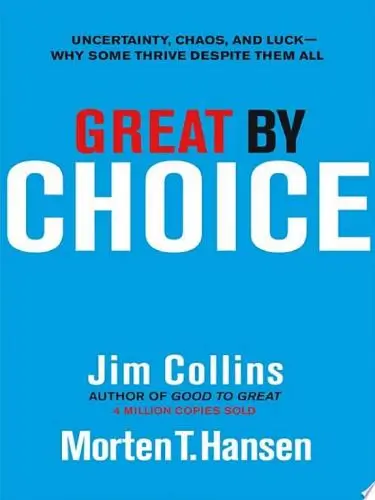
Great by Choice
Jim Collins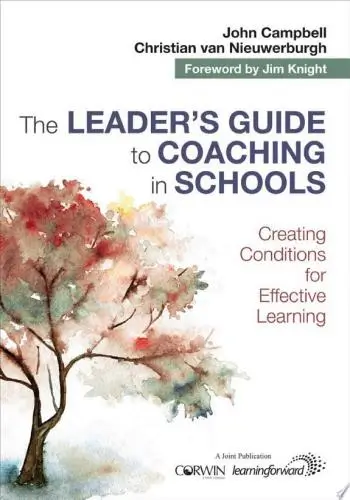
The Leader′s Guide to Coaching in Schools
John Campbell
Preparing School Leaders for the 21st Century
Stephan Gerhard Huber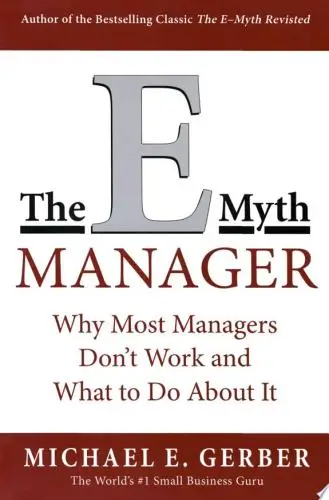
The E-Myth Manager
Michael E. Gerber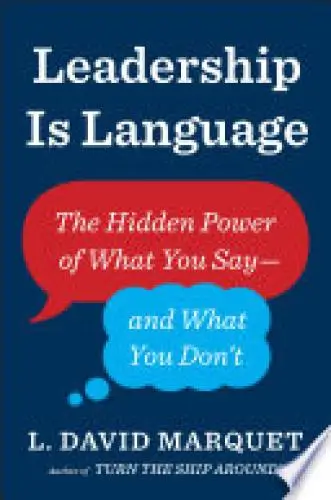
Leadership Is Language
L. David Marquet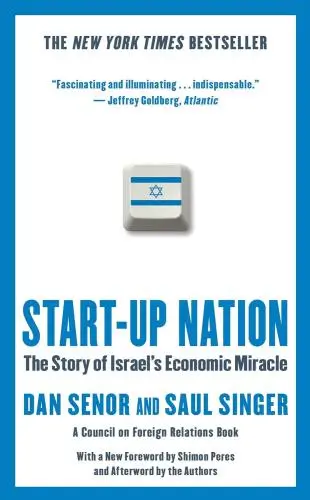
Start-up Nation
Dan Senor
The Founder's Dilemmas
Noam WassermanTrending Summaries

Peak
Anders Ericsson
Never Split the Difference
Chris Voss
Smart Brevity
Jim VandeHei
The Psychology of Money
Morgan Housel
The First 90 Days
Michael D. Watkins
Atomic Habits
James Clear
Thinking, Fast and Slow
Daniel Kahneman
The Body Keeps the Score
Bessel van der Kolk M.D.
The Power of Regret
Daniel H. Pink
The Compound Effect
Darren HardyNew Books

The Art of Spending Money
Morgan Housel
$100M Offers
Alex Hormozi
A Candle for Kiri
Edna Mae Holm
Principles of Marketing, Global Edition
Gary Armstrong
Serpent Rising: The Kundalini Compendium
Neven Paar
Feeling Is the Secret
Neville Goddard
The 100 Best Business Books of All Time
Jack Covert
My Oxford Year
Julia Whelan
Trading in the Zone
Mark Douglas
